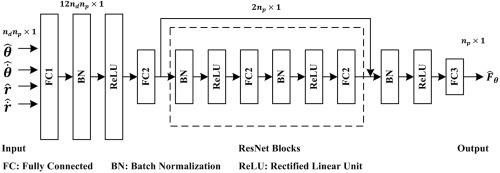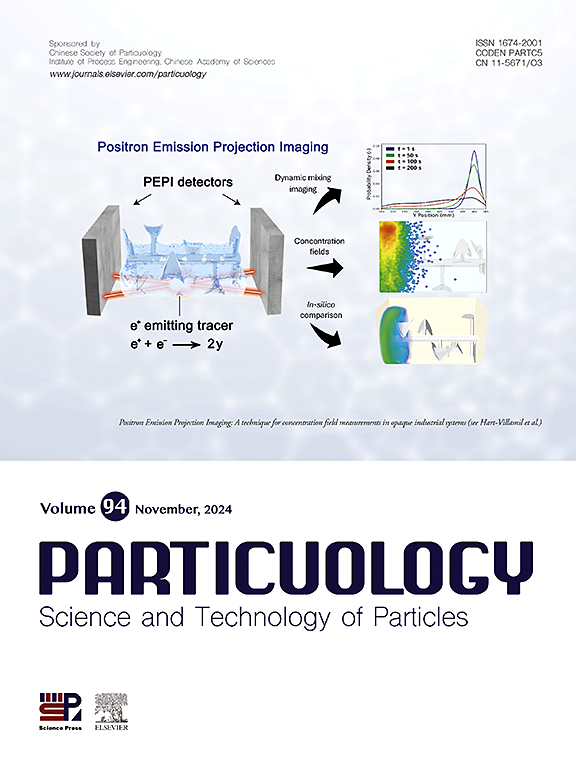多粒子相互作用力的物理信息神经网络模型
IF 4.1
2区 材料科学
Q2 ENGINEERING, CHEMICAL
引用次数: 0
摘要
离散元法(DEM)模型计算每对粒子之间的相互作用力。然而,当粒子数量很大时,它的计算成本很高。本文提出了一种新的人工神经网络(ANN)模型来取代DEM中包含接触力和静电力的多粒子相互作用力模型。该模型将残差网络(ResNet)与物理通知神经网络(PINN)相结合。物理损失项由多粒子系统的牛顿第三定律推导而来。基于基于100、200和300粒子系统的二维有壁旋流DEM模拟数据,对人工神经网络模型的性能进行了评价。与DEM模型相比,计算时间缩短了近一个数量级(7-10倍)。此外,人工神经网络模型的准确率达到R2>;0.93,只有≤2%的粒子不能很好地预测。本文章由计算机程序翻译,如有差异,请以英文原文为准。

Physics informed neural network model for multi-particle interaction forces
The discrete element method (DEM) model calculates interaction forces between each pair of particles. However, it becomes computational expensive especially when the number of particles is large. In this study, a novel artificial neural network (ANN) model is proposed to replace the model of interaction forces between multiple particles in DEM including contact force and electrostatic force. The ANN model combines the residual network (ResNet) with the physics informed neural network (PINN). The physical loss term is derived from the Newton's third law about internal forces in multi-particle system. The performance of the ANN model is evaluated based on the DEM simulation data of 100, 200, and 300-particle system in a wall-bounded 2D swirling flow. It is found that the computing time is reduced nearly an order of magnitude (7–10 times) compared with the DEM model. In addition, the accuracy of the ANN model achieves the with only particles are not well predicted.
求助全文
通过发布文献求助,成功后即可免费获取论文全文。
去求助
来源期刊

Particuology
工程技术-材料科学:综合
CiteScore
6.70
自引率
2.90%
发文量
1730
审稿时长
32 days
期刊介绍:
The word ‘particuology’ was coined to parallel the discipline for the science and technology of particles.
Particuology is an interdisciplinary journal that publishes frontier research articles and critical reviews on the discovery, formulation and engineering of particulate materials, processes and systems. It especially welcomes contributions utilising advanced theoretical, modelling and measurement methods to enable the discovery and creation of new particulate materials, and the manufacturing of functional particulate-based products, such as sensors.
Papers are handled by Thematic Editors who oversee contributions from specific subject fields. These fields are classified into: Particle Synthesis and Modification; Particle Characterization and Measurement; Granular Systems and Bulk Solids Technology; Fluidization and Particle-Fluid Systems; Aerosols; and Applications of Particle Technology.
Key topics concerning the creation and processing of particulates include:
-Modelling and simulation of particle formation, collective behaviour of particles and systems for particle production over a broad spectrum of length scales
-Mining of experimental data for particle synthesis and surface properties to facilitate the creation of new materials and processes
-Particle design and preparation including controlled response and sensing functionalities in formation, delivery systems and biological systems, etc.
-Experimental and computational methods for visualization and analysis of particulate system.
These topics are broadly relevant to the production of materials, pharmaceuticals and food, and to the conversion of energy resources to fuels and protection of the environment.
 求助内容:
求助内容: 应助结果提醒方式:
应助结果提醒方式:


